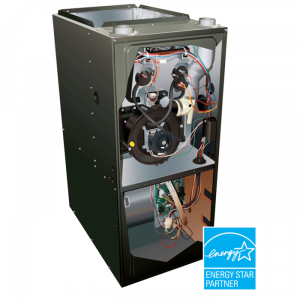As a building or property manager, it’s your job to maintain a safe and comfortable environment for everyone working or living in the building. The quickest way to get people complaining is to mess with the temperature.
Don’t leave your tenants out in the cold. Instead, be proactive and make sure your HVAC system is properly maintained. Your reputation depends on people knowing they can rely on you to keep the building running smoothly.
Also, it’s easier to fix problems before they become emergencies. This season, make HVAC system maintenance a priority so you can be sure your heating will keep working when you need it most.

6 essential HVAC system maintenance tasks for heating equipment
1. Clean or replace air filters
When it comes to HVAC system maintenance, cleaning the air filters is a no-brainer. It’s one of the simplest things that you can do yourself that has a big impact on how well the system works. When an air filter becomes clogged with dust and particulates, the lack of airflow forces the equipment to work harder and use more energy to achieve the same temperatures.
Clogged filters can also result in more dust and pollen in the air, which can worsen health conditions for people with asthma and allergies. Plus, more dust and debris gets into your equipment and can cause damage over time.
2. Have the ventilation system checked
The ductwork that moves heated air throughout the building, and the flues that vent exhaust out, are the most overlooked parts of the HVAC system. Don’t let it be out of sight, out of mind. Have an expert check the ducts and vents for any dislocated parts, clogs, holes, or corrosion, so you can correct any problems that impact your comfort conditions (and energy usage).
Ductwork repair might seem like an easy enough task to tackle yourself, but it’s not recommended. Many DIY repair attempts end up damaging the equipment. Get a professional HVAC tech in to assess and repair a structural issue or blocked flue.
3. Clean exterior components
When it comes to HVAC system maintenance, your system’s exterior components (such as condensers and rooftop units) need as much attention as the interior units. They are exposed to the elements and these outdoor units can often experience operational issues due to snow, leaves, debris, water, lightning and many other factors.
Make sure to keep outdoor equipment unit clear of leaves and snow, especially after a storm. Pay special attention to the area around the outdoor air intake. This supplies air for the whole system, so if there’s any blockage or source of contamination nearby, this can affect the air in the whole building. It’s recommended to maintain at least a two-foot clearance from the intake valve.
Your HVAC maintenance plan should include cleaning outdoor components at least a couple of times each year. The coils, motors, and fan blades operate more efficiently when cleaned. Pay attention to seasonal factors like seeds from cottonwood trees which can coat condenser coils just a blanket. Cleaning the coils too early before the cottonwood flies means it will just need cleaning again once it does.
4. Watch out for mold
Where there is moisture, there is the potential for mold to grow. To prevent mold, keep an eye out for any signs of moisture where it doesn’t belong. It can be difficult to get rid of, not to mention the potential health hazards for the people in your building.
A good HVAC system maintenance plan will focus on inspecting the most common places where moisture can build up. These include boilers, ventilation shafts, coils, drain lines, and drain pans.
5. Replace worn parts proactively
HVAC system maintenance should always include inspections of your system’s condition and identification of aging parts. Replacing worn parts BEFORE they break is the best way to prevent breakdowns and expensive repairs.
Your HVAC tech should inspect all electrical and mechanical parts and keep you aware of which parts of the system need attention.
One critical heating component to pay attention to is the ignition assembly. This is a delicate part of the furnace that, if dirty or damaged, will leave you without any heat. Replacing fan belts when they show wear also helps prevent breakdowns and helps your equipment operate efficiently.
6. Document equipment service & create a maintenance contract
HVAC is a complex system with many components. Especially for a large commercial or base building system, the number of pieces to keep track of can really add up.
If it’s your job to manage the status of a large HVAC system, make it simpler by keeping an HVAC system maintenance log or calendar. Note when equipment is serviced so you’ll have an easy reference for when each job needs to be done in the future.
Even better, get a preventative maintenance contract with a reputable HVAC company that can track all your components and provide you with regular status reports. A professional service technician can often identify and address issues before they become major problems.